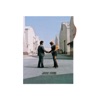By Greg Torode
HONG KONG (Reuters) -China deployed two long-range H-6 bombers around the Scarborough Shoal this week, in Beijing’s latest move to assert sovereignty over the hotly disputed atoll in the South China Sea, satellite images obtained by Reuters showed.
The deployment, which was not publicised by China, came ahead of U.S. Defense Secretary Pete Hegseth’s visit to the Philippines, which also claims the shoal that lies within its exclusive economic zone of 200 nautical miles.
China’s defence ministry did not immediately respond to questions from Reuters on the scale of the deployment or whether it was timed to coincide with Hegseth’s trip.
Officials from the Philippines National Security Council and military did not immediately respond to requests for comment.
During a visit to Manila on Friday, Hegseth reaffirmed the United States’ “ironclad commitment” to its mutual defence treaty with the Philippines, saying China’s actions made deterrence necessary in the South China Sea.
Monday’s images taken by Maxar Technologies show two aircraft east of Scarborough Shoal, which China calls “Huangyan Dao”.
In recent years, Chinese coast guard vessels have clashed frequently with Philippine fishermen near the mouth of atoll, which China has at times attempted to block since it seized de facto control of the shoal in 2012.
Last month, the Philippines coast guard accused the Chinese navy of performing dangerous flight manoeuvres nearby.
An international arbitration tribunal in the Hague ruled in 2016 that China’s claims had no legal basis, but Beijing rejected that decision.
In an email to Reuters, Maxar said the aircraft in the images were H-6 bombers, adding that “rainbow colours” close to them resulted when satellite images of fast-moving objects were processed.
The timing of the flights was unlikely to be accidental, however, regional security analysts said.
Beijing was sending “a signal that China has a sophisticated military,” said Peter Layton of Australia’s Griffith Asia Institute.
“The bombers’ second message could be you (the United States) have the potential for long range strike; so do we, and in larger numbers. Clearly not serendipity,” he added.
Regional military attaches say China has gradually stepped up deployments of H-6 bombers into the South China Sea as its military presence has grown, starting with landings on improved runways in the disputed Paracel islands in 2018.
The jet-powered H-6 is based on a Soviet-era design but has been modernised to carry an array of anti-ship and land attack cruise missiles, and some are capable of launching nuclear-tipped ballistic missiles.
Similar to the U.S. B-52, the basic H-6 design dates back to the 1950s but with improved engines, modern strike weapons and on-board flight systems, it is China’s key long-range bomber.
The Pentagon’s annual report on China’s military in December said a more stealthy aircraft was probably in development.
The bombers were deployed in war game drills in October around Taiwan, which China claims as its own territory, and in late December at Scarborough, as part of broader air and sea operations by the Chinese military’s Southern Theatre Command.
The command, which covers the South China Sea, operates two regiments of the bombers, the London-based International Institute for Strategic Studies says.
The December drills were publicised, with the defence ministry saying at the time they were meant to “resolutely safeguard China’s national sovereignty and security, and maintain peace in the South China Sea”.
The ministry posted images of aircraft above the shoal but satellite images capturing patrols in operation are rare.
The altitude at which the H-6s were flying near the shoal is not known.
Taiwan’s government rejects China’s sovereignty claim, saying only the island’s people can decide their future.
(Reporting by Greg Torode in Hong Kong; Additional reporting by Karen Lema in Manila and Gerry Doyle in Singapore and the Beijing newsroom; Editing by Clarence Fernandez)











Comments